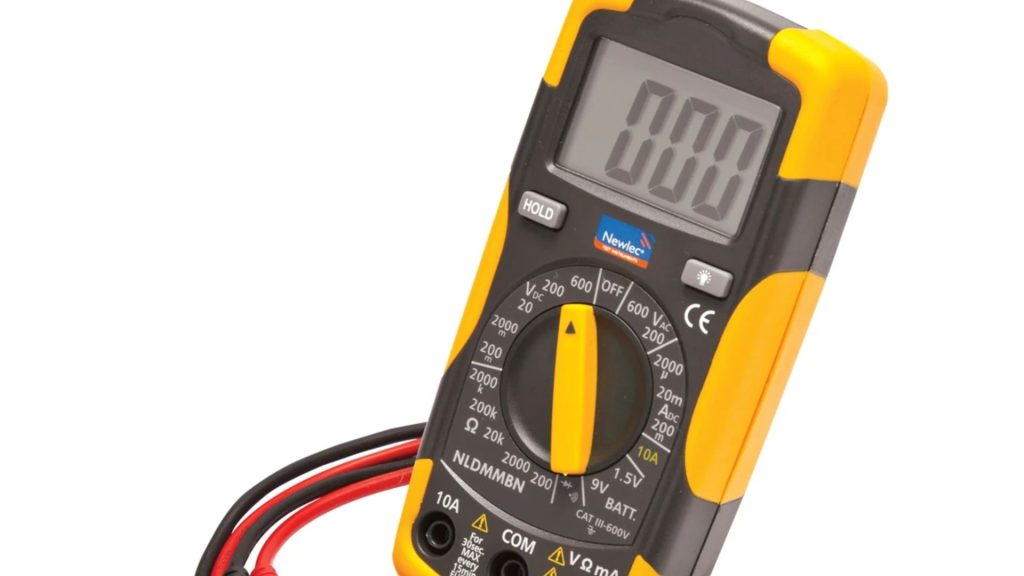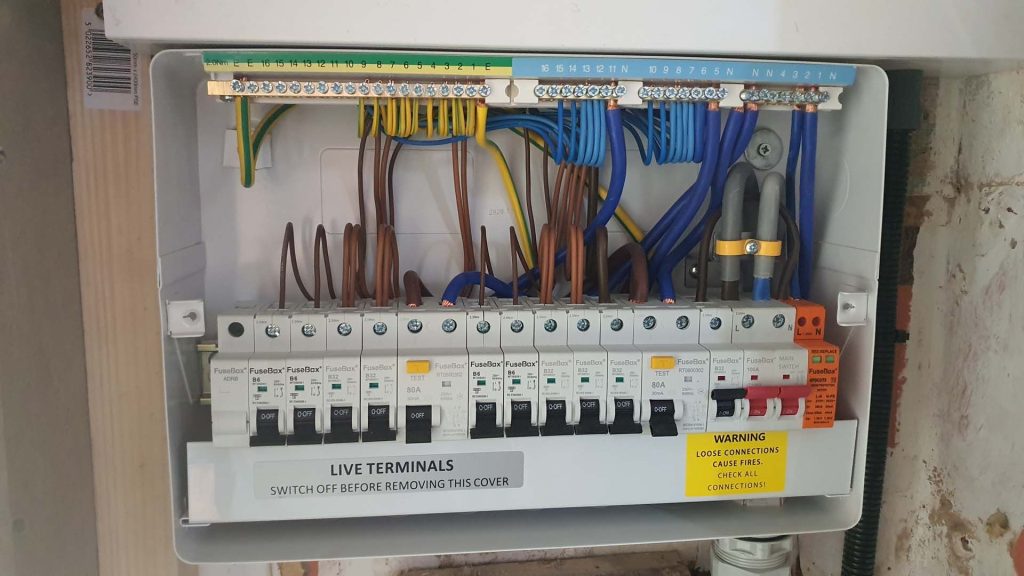A multimeter is an essential electrical testing device that combines multiple measurement functions into one handy tool. Professional electricians rely on these versatile instruments daily to diagnose electrical problems, test circuits, and ensure safe installations.
What are the different types of multimeters?
Multimeters come in two primary varieties, each with distinct advantages for different electrical testing scenarios. The choice between them often depends on the specific application and personal preference.
Analogue Multimeters
Analogue multimeters feature a moving needle display that points to measurements on a printed scale. Though they might seem outdated compared to their digital counterparts, these traditional instruments offer some unique benefits:
- Better visualisation of rapidly changing values
- No batteries required for basic resistance measurements
- Often more affordable than digital versions
- Greater sensitivity to small changes in readings
Many professional electricians still keep an analogue multimeter in their toolkit, particularly when monitoring fluctuating electrical signals is necessary.
Digital Multimeters
Digital multimeters display readings as precise numbers on an LCD screen, making them the preferred choice for most modern electrical work:
- Easier to read exact values
- Higher accuracy for most measurements
- Additional features like data storage and auto-ranging
- Less chance of reading errors
Most professional electricians now use digital multimeters for everyday electrical testing and troubleshooting. When our technicians perform fault finding services, digital multimeters allow for quick, precise diagnostics of electrical problems.
What components make up a multimeter?
Understanding the key parts of a multimeter helps you use it effectively and safely. Every multimeter, regardless of type or brand, contains these essential components:
Display
The display shows measurement readings – either as a moving needle on an analogue scale or as numerical digits on a digital screen. Modern digital multimeters often include additional indicators for battery life, measurement mode, and warning symbols.
Selection Dial
The rotary selection dial allows you to choose what electrical property you want to measure. Typical settings include:
- DC voltage (V⎓)
- AC voltage (V~)
- Resistance (Ω)
- Current (A)
- Continuity test
- Diode test
More advanced models might include settings for capacitance, frequency, temperature, and other specialised measurements.
Input Ports
Most multimeters feature three or four input jacks where the test leads connect:
- COM (Common): The black lead always connects here
- VΩmA: For voltage, resistance, and low current measurements
- 10A: For measuring higher currents (typically above 200mA)
- Sometimes a separate socket for transistor testing
Probes
The two test leads (typically red and black) connect to the multimeter on one end and contact the circuit being tested on the other. The black probe connects to the COM port and usually touches the negative or ground point in the circuit, while the red probe connects to the appropriate measurement port.
What can you measure with a multimeter?
A standard multimeter can measure several fundamental electrical properties, making it an incredibly versatile tool for electrical testing.
Voltage Measurement
Voltage measurement is one of the most common multimeter functions. You can measure:
- DC voltage in batteries, power supplies, and electronic circuits
- AC voltage in household outlets, light fixtures, and appliances
When our technicians perform power outage repairs, voltage testing is essential to identify where power has been lost and verify when it’s restored safely.
Current Measurement
Measuring current helps determine how much electricity is flowing through a circuit:
- DC current in electronic devices and automotive circuits
- AC current in household circuits (though clamp meters are often preferred for this)
Current measurements require breaking the circuit and connecting the multimeter in series, which is why this type of measurement should typically be left to qualified professionals.
Resistance Measurement
Resistance testing helps identify:
- Component values (like resistors)
- Broken wires or damaged components
- Insulation quality
During house rewires, our electricians regularly test circuit resistance to ensure proper connections throughout the installation.
Continuity Testing
This function checks whether a circuit is complete or broken. A continuous circuit will usually trigger a beep from the multimeter, making it easy to:
- Test fuses
- Find breaks in wires
- Verify connections
- Check switches
Additional Functions
Higher-end multimeters may also measure:
- Capacitance (for testing capacitors)
- Frequency (for testing electronic signals)
- Temperature (with additional probes)
- Transistor gain
- Duty cycle
How do you use a multimeter safely?
Safety must always be your priority when working with electrical equipment. Here’s how to use a multimeter without putting yourself at risk:
Preparation Steps
Before taking any measurements:
- Inspect your multimeter for damage – cracked cases, frayed leads, or other defects make it unsafe to use
- Ensure you’re using the correct measurement setting for your test
- Connect the test leads to the appropriate ports (black to COM, red to the suitable measurement port)
- Set the range higher than expected if your meter isn’t auto-ranging
Measuring Voltage Safely
When measuring voltage:
- Keep your fingers behind the protective guards on the probes
- Connect to the circuit without touching any metal parts
- For AC voltage, start with the highest range setting
- Always hold the insulated part of the probes
Avoiding Common Mistakes
The most dangerous mistakes when using multimeters include:
- Attempting to measure current without breaking the circuit
- Using resistance mode on live circuits
- Selecting the wrong measurement port for high current
- Testing voltages beyond the meter’s rating
For complex electrical issues, particularly those involving mains voltage, it’s always safest to contact qualified emergency electricians rather than attempting dangerous diagnostics yourself.
When might you need a multimeter at home?
While professional electricians use multimeters daily, there are several situations where homeowners might find one useful:
Testing Batteries
One of the simplest and safest uses for a multimeter is testing battery voltage. A standard 1.5V AA battery reading below 1.3V is likely depleted and needs replacement.
Checking Fuses
When an appliance stops working, a blown fuse might be the culprit. A multimeter’s continuity function can quickly determine if a fuse is intact without needing to replace it as a test.
Troubleshooting Simple Appliances
For low-voltage devices like lamps, a multimeter can help identify where a problem exists – whether it’s in the cord, switch, or bulb socket.
Verifying Power Outages
During a power cut, a multimeter can check whether an outlet is receiving power, helping determine if the issue is localised to your home or a wider outage.
When should you call a professional electrician?
While multimeters are useful tools, many electrical problems require professional expertise. Contact Relec LTD when:
- Any issue involves mains voltage (230V in the UK)
- You need to access your consumer unit/fuseboard
- Electrical problems occur repeatedly
- You notice burning smells, sparks, or discoloured outlets
- You’re unsure about electrical safety
Our qualified electricians have the training and experience to safely diagnose and repair electrical problems using professional-grade testing equipment. For serious electrical faults, our fault finding service provides a thorough investigation to identify hidden problems before they become dangerous.
Why trust Relec for your electrical testing needs?
Professional electrical testing requires more than just the right tools – it demands extensive training and experience. Our electricians:
- Hold recognised qualifications and regularly update their skills
- Follow strict safety protocols when testing electrical systems
- Use calibrated, professional-grade testing equipment
- Document all test results for your peace of mind
Whether you need a complete electrical inspection and testing service or emergency electrical repairs, our team provides safe, reliable solutions throughout Wigan and the North West.
For homeowners in Wigan and throughout the North West, knowing the basics about multimeters can help you better understand when simple electrical issues might be tackled yourself versus when to call electricians in Wigan.
For expert electrical testing, diagnosis, and repairs, call our team today on 07380 392 496.


